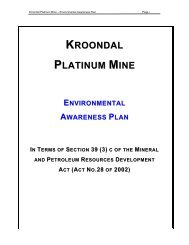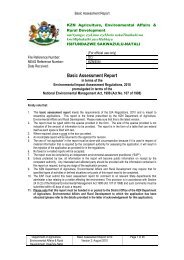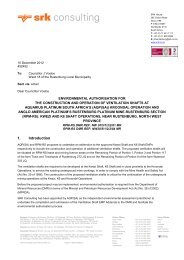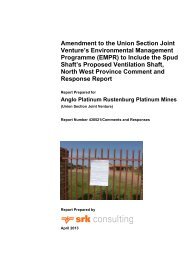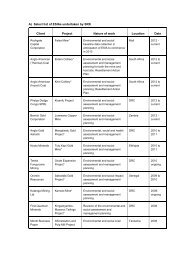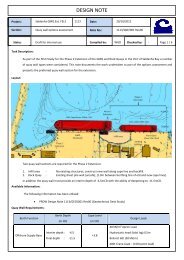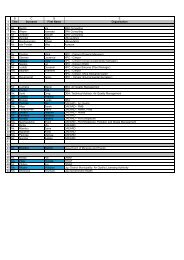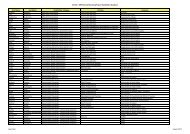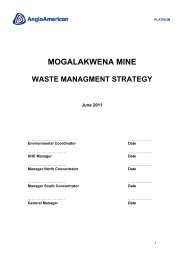Biodiversity (1 - SRK Consulting
Biodiversity (1 - SRK Consulting
Biodiversity (1 - SRK Consulting
You also want an ePaper? Increase the reach of your titles
YUMPU automatically turns print PDFs into web optimized ePapers that Google loves.
Table 1: Rating of recognised on-site avian habitats (site + 500 m buffer) on the farm<br />
Zuurwater, with assessment of a site(s) for solar panel tables on the property.<br />
Conservation Priority<br />
Sensitivity<br />
Mediumhiglow<br />
Medium-<br />
High<br />
Medium<br />
Avian Habitats<br />
Low High Low<br />
1. Grassy plains X X<br />
2. Red sands/dunes X X<br />
3. Bare washes/pans X X<br />
4. Rocky mountain<br />
and gravel skirts<br />
X<br />
X<br />
9.3. Expected and Observed Bird Species Diversity<br />
I assessed that 167 bird species have a high, medium or low probability of occurrence<br />
on site, based on the habitats available, and of these I confirmed the presence of 44<br />
species (27%), which offers a good sample in support of general species:habitat<br />
correlations (Table 2). The number would surely have been higher if we had spent more<br />
days in search of species, if the surveys had started earlier and extended later in the<br />
day/night, and if we had covered every sector in more detail. In these arid conditions,<br />
different seasons and rainfall are also relevant. I scored 73 species (46%) as having a<br />
high probability of occurrence, 53 species (32%) a medium probability and 41 species<br />
(25%) a low probability, and of these I confirmed the presence of 42, 1 and 1 species,<br />
respectively. The total number of species expected would be much larger if other unlikely<br />
species that are only recorded as rare vagrants to the area were not excluded from this<br />
analysis due to inadequate availability of their preferred habitat(s).<br />
The ford different habitat types that I distinguished either supported or are expected to<br />
support somewhat different species of birds (Table 2). I generally did not assign aerialfeeding<br />
species, such as swifts, martins and swallows, to a specific habitat on site,<br />
except for those habitats that offered potential nesting habitats, since they feed wherever<br />
aerial wind-borne plankton is available. Only 9 generalist species (5%) are expected to<br />
use all four habitat-types, excluding 11 species (7%) classed as aerial feeders and<br />
expected to range across all habitats when feeding. Forty-six species (28%) preferred<br />
three habitats, 46 (28%) preferred two, and 49 (30%) only a single habitat type, and<br />
100



